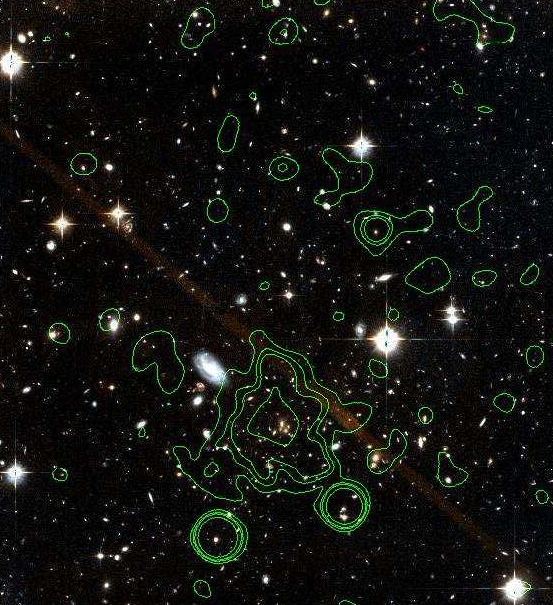
by Ryan Foltz | Feb 21, 2012 | Daily Paper Summaries
Title: The Evolution of the Red Sequence Slope in Massive Galaxy Clusters Authors: J. P. Stott, K. A. Pimbblet, A. C. Edge, G. P. Smith, J. L. Wardlow First Author’s Institution: Astrophysics Research Institute, Liverpool John Moores UniversityIn this post, we’ll examine a recent paper on the ongoing and controversial investigation into the evolution of the galactic color-magnitude relation. The color-magnitude relation is a phenomenon specific to galaxies in clusters, and I’ve written a post on the subject before. Studying the time evolution of this relationship is a powerful means with which to probe galaxy evolution, which means it can provide us with a picture of how structure formed in our universe.The Color-Magnitude RelationWe’ve known about the color-magnitude relation in some capacity since the 1950s. De Vaucouleurs noticed the effect in 1961 during his study of morphology in the Virgo cluster, and before him Stebbins and Whitford had found suggestive results in a handful of their galaxies. However, it wasn’t until Bower’s work in 1992 that the relation was conclusively demonstrated.So what is it? To put it simply, the color-magnitude relation just means that an elliptical or lenticular galaxy of a certain redness in a cluster will have a certain absolute magnitude, or brightness. A bluer galaxy is fainter. There are several things to note about the phenomenon:For one, the relation isn’t so exact that the galaxy must have the indicated magnitude, but Bower demonstrated that the relationship was in fact very good, with intrinsic scatter on the order of a few hundredths of magnitude for his sample. In fact, since we can determine a galaxy’s absolute magnitude to such precision, we can...
by Ryan Foltz | Dec 28, 2011 | Daily Paper Summaries
Can we match models of galaxy evolution to multiwavelength galaxy observations in order to infer galactic properties? In this paper, the authors compare this method to others for a sample of z~1 galaxies.

by Ryan Foltz | Nov 1, 2011 | Daily Paper Summaries
The authors probe the population of early-type galaxies in the furthest galaxy clusters to date.



